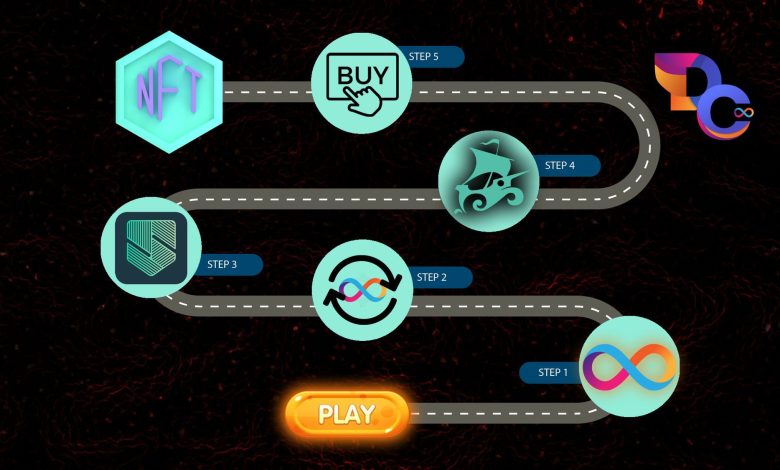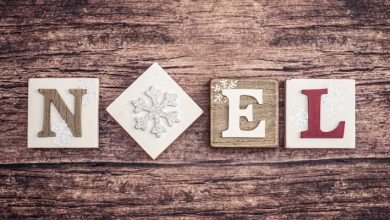How to Buy NFTs: A Step-by-Step Guide

- Understanding NFTs: A Beginner’s Guide
- Choosing the Right NFT Marketplace
- Setting Up Your Digital Wallet for NFTs
- Researching and Evaluating NFT Projects
- Making Your First NFT Purchase
- Storing and Managing Your NFT Collection
Understanding NFTs: A Beginner’s Guide
NFTs, or non-fungible tokens, have been gaining popularity in the digital world as a unique form of digital asset. Unlike cryptocurrencies such as Bitcoin or Ethereum, NFTs are one-of-a-kind digital assets that are stored on a blockchain. This means that each NFT has a unique value and cannot be exchanged for another NFT like-for-like.
Understanding NFTs is essential before diving into the world of buying and selling them. NFTs can represent digital art, collectibles, music, videos, and even virtual real estate. Each NFT is unique and can be bought and sold like any other asset. The ownership of an NFT is recorded on a blockchain, providing proof of ownership and authenticity.
When buying NFTs, it is crucial to do your research and understand the value of the NFT you are interested in. Some NFTs may increase in value over time, while others may decrease. It is essential to consider factors such as the artist or creator behind the NFT, the rarity of the NFT, and the demand for similar NFTs in the market.
Choosing the Right NFT Marketplace
When it comes to buying NFTs, choosing the right marketplace is crucial. There are several factors to consider when selecting the platform where you will purchase your non-fungible tokens.
One of the most important things to look for in an NFT marketplace is **reputation**. You want to make sure that you are buying from a reputable and trustworthy platform to avoid any potential scams or fraud. Do some research on the marketplace and read reviews from other users to get an idea of their **reliability**.
Another factor to consider is the **fees** associated with buying NFTs on a particular marketplace. Some platforms charge higher fees than others, so it’s essential to compare **pricing** before making a decision. You’ll want to find a marketplace that offers competitive fees without sacrificing **security** or **quality**.
**User interface** is also an important consideration when choosing an NFT marketplace. You want to make sure that the platform is easy to navigate and user-friendly, especially if you are new to the world of NFTs. Look for a marketplace that offers a **clean** and **intuitive** interface that makes it easy to browse and purchase NFTs.
Lastly, consider the **variety** of NFTs available on the marketplace. Some platforms specialize in specific types of NFTs, such as **artwork** or **collectibles**, while others offer a wide range of options. Choose a marketplace that aligns with your interests and offers the types of NFTs you are looking to purchase.
By taking these factors into account, you can ensure that you are choosing the right NFT marketplace for your needs. Whether you are a seasoned collector or a newcomer to the world of NFTs, finding the right platform is essential for a successful purchasing experience.
Setting Up Your Digital Wallet for NFTs
To set up your digital wallet for NFTs, you will first need to choose a wallet that supports non-fungible tokens. Popular options include MetaMask, Trust Wallet, and Coinbase Wallet. Once you have selected a wallet, follow these steps to get started:
1. **Create an Account**: Download the wallet app or extension and follow the prompts to create an account. Make sure to securely store your seed phrase, as this will be needed to access your wallet in the future.
2. **Add Funds**: To buy NFTs, you will need to add cryptocurrency to your wallet. You can do this by transferring funds from another wallet or purchasing crypto directly within your wallet app.
3. **Connect to a Marketplace**: To browse and purchase NFTs, you will need to connect your wallet to an NFT marketplace. Popular options include OpenSea, Rarible, and Foundation. Follow the instructions on the marketplace to connect your wallet.
4. **Verify Your Wallet**: Some marketplaces may require you to verify your wallet before buying or selling NFTs. This typically involves signing a message to prove ownership of the wallet.
5. **Start Buying NFTs**: Once your wallet is set up and connected to a marketplace, you can start browsing and buying NFTs. Simply choose the NFT you want to purchase, confirm the transaction in your wallet, and the NFT will be added to your collection.
By following these steps, you can set up your digital wallet for NFTs and start buying and collecting non-fungible tokens with ease. Remember to always keep your seed phrase secure and be cautious when interacting with NFT marketplaces to protect your assets.
Researching and Evaluating NFT Projects
When **researching** and **evaluating** NFT projects, it is crucial to take the time to thoroughly analyze each potential investment. One of the first steps is to **examine** the **background** of the project and the team behind it. Look for **information** on the **developers**, their **experience**, and any **previous** projects they have worked on. This can give you **insight** into the **credibility** and **reputation** of the project.
Next, **evaluate** the **concept** and **utility** of the NFT. Consider whether the **project** **offers** something **unique** or **innovative** that sets it apart from other NFTs in the market. **Assess** the **potential** **value** of the NFT and whether it **aligns** with your **investment** goals.
It is also important to **research** the **market** **demand** for the NFT. Look at **similar** projects and **analyze** their **success** and **popularity**. This can give you a **better** **understanding** of the **potential** **demand** for the NFT you are **considering**.
Additionally, **take** the time to **review** the **smart** **contract** of the NFT project. **Ensure** that the **contract** is **secure** and **transparent**, and **understand** the **terms** and **conditions** of **ownership**. **Verify** that the **NFT** is **authentic** and **unique**, and that it **complies** with **industry** **standards**.
By **conducting** **thorough** **research** and **evaluation** of NFT projects, you can **make** **informed** **decisions** and **mitigate** **risks** when **buying** NFTs.
Making Your First NFT Purchase
To make your first NFT purchase, you will need to follow a few simple steps. First, you should choose a reputable NFT marketplace where you can browse and buy NFTs. Some popular options include OpenSea, Rarible, and Foundation. Once you have selected a marketplace, you will need to create an account and connect a digital wallet to it. This wallet will be used to store your NFTs securely.
Next, you can start browsing the NFTs available for sale on the marketplace. You can use filters to narrow down your search based on criteria such as price, artist, and category. When you find an NFT that you like, you can place a bid or buy it outright, depending on the seller’s preferences. Keep in mind that some NFTs may be sold through auctions, so you may need to be patient and wait for the auction to end before you can make a purchase.
Once you have successfully purchased an NFT, it will be transferred to your digital wallet. From there, you can choose to hold onto the NFT as an investment or sell it on the marketplace. Remember to do your research and only buy NFTs from reputable artists and creators to ensure that you are getting a quality product. With these steps, you can start building your NFT collection and participate in the exciting world of digital art and collectibles.
Storing and Managing Your NFT Collection
Once you have purchased your NFTs, it is crucial to have a proper strategy for storing and managing your collection. **Storing** your NFTs securely is essential to protect your investment and ensure their longevity. There are several options available for storing NFTs, including **digital wallets** and **NFT marketplaces**.
One popular method for storing NFTs is to use a **digital wallet**. These wallets are specifically designed to store and manage NFTs securely. Some popular digital wallets for NFTs include **MetaMask**, **Trust Wallet**, and **Coinbase Wallet**. When choosing a digital wallet, make sure to select one that is compatible with the blockchain network where your NFTs are stored.
Another option for storing NFTs is to keep them on the **NFT marketplace** where you purchased them. Many NFT marketplaces offer built-in storage solutions for NFTs, making it convenient to manage your collection in one place. However, it is essential to research the security measures in place on the marketplace to ensure your NFTs are safe from theft or hacking.
In addition to storing your NFTs, it is crucial to **manage** your collection effectively. This includes keeping track of the **value** of your NFTs, monitoring any changes in the market, and staying informed about new opportunities to buy or sell NFTs. By actively managing your collection, you can maximize the **potential** return on your investment and make informed decisions about when to buy, sell, or trade your NFTs.
Overall, storing and managing your NFT collection is a critical aspect of **participating** in the NFT market. By taking the time to secure your NFTs properly and stay informed about market trends, you can **protect** your investment and potentially **increase** its value over time.



